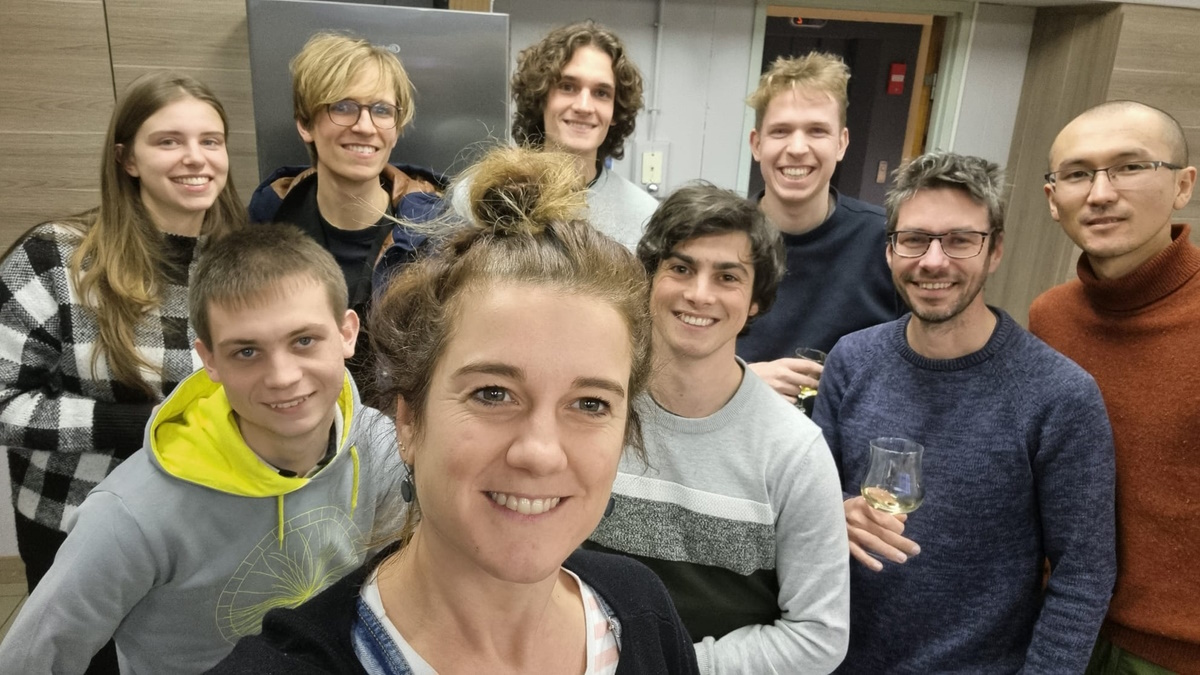Thesis
Please check our research page for more info on our current research
Our research group
We are a young and dynamic research group at the department of Physics and Astronomy led by Prof. Vandersickel (nele.vandersickel@ugent.be). We perform research at the edge of science including physics, computer programming and medicine, a truly interdisciplinary setting. Our research focuses on the analysis of cardiac arrhythmia, which is the main cause of death in the Western society. We provide weekly guidance, step by step, while we will also invite you to come up with own ideas and allow room for creativity. We will give you insight in the scientific process of solving problems, while also focusing on personal growth. We aim for the thesis to allow you to do interesting research while also enjoying the process. Ask a former master student how they experienced their master thesis with us.

What are we looking for? We do not care about your previous scores, but we ask a motivated mindset and a love for programming and solving problems.
What will you do? We do not make subjects just to keep you busy, but you will actually contribute to our scientific research. We have selected subjects which are possible to investigate during one year, while also being able to actually make a contribution. If you succeed, your research should be able (maybe joined with other research) to be published in a scientific journal. How cool would that be?
2023-24 thesis subjects
We present some subjects which seem relevant to us. If you have a specific interest, please also talk to us, and we might be able think of other subjects which match your interests. We can also bring you to the clinic so you can observe ablation procedures and explain and discuss your results with the medical doctors. We have written project for 5 students!
DGM stands for Directed Graph Mapping, a software package to analyze cardiac arrhythmias developed by our research group
1. Analyzing conduction velocity is cardiac arrhythmia with DGM
DGM still lacks the possibility to display conduction velocities for a given dataset of cardiac arrhythmia, which is important for the analysis of cardiac arrhythmia. You will implement this feature in our software. First, you will do simulations to have a clear benchmark to check your implementation. You will implement different approaches which have been described in the literature. Second, you will analyze an experimental dataset to see how the different implementations give different results. You will investigate which methods is the best.
2. Interpolation of sparse datasets of cardiac arrhythmia to improve the diagnosis of the source of the arrhythmia with DGM
Some of our datasets only have a sparse amount data points. Your task will be implementing an interpolation method (or methods) to improve the outcome of DGM for both simulated and clinical data.
3. Multi-center comparison of post-ablation data of atrial tachycardia with DGM
We are currently collecting many new datasets in many different hospitals who perform ablations on patients. So far, we only analyzed datasets from 2 different hospitals. Your task will be to analyze these different datasets and to compare these results of the different hospitals. Are there differences with how DGM analyzes the cases from the different hospitals? Do some hospitals perform worse? And why is that? Should our software be improved to cover these different hospitals?
4. Add new feature to DGM, to allow analyzing different types of signals
Currently, we just locate the LAT on the signal of the local electrograms, which just gives us a single information punt from a whole signal. Last year, a engineering student also implemented how to track double potentials. This is extremely useful for the EP to better understand the cardiac arrhythmia as it shows regions of conduction block. However, this year, you will take it one step further and also implement the signals that have fractionation. There are over 27 different definitions for a fractionated signal. In short, fractionated signals indicate slower conduction velocity of the signal, and thus diseased heart, which become interesting abaltion targets. You will investigate these different definitions and implement the ones that seem the best. We will have access to a great new dataset with amazing signals, so this will be extremely interesting to add this feature to DGM.
5. Comparison of the rotor behavior of different cell models in OpenCARP
Rotor form the source of many cardiac arrhythmia. They can be studies with computer simulations inducing these rotors. However, there are currently so many different cell models for the atria as well as the ventricles, that there does not exist a good overview of how rotors behave depending on the model. We propose to study and compares the behavior of all the different cells models which are accessible in openCARP. With DGM you can investigate all the different cell models and how spiral waves or rotors behave in these cell models.
6. Create a heuristic function to optimize the parameters of DGM using genetic evolution (machine learning)
Currently, we have implemented DGM based on a set of parameters that we set by hand and by experience. However, it would be much more instructive to write a function which optimized this set of parameters based on a dataset for which we know the ground truth. Your task will be to write a heuristic function which you will minimize to find the optimal set of parameters, while having the maximum correct set of diagnoses.